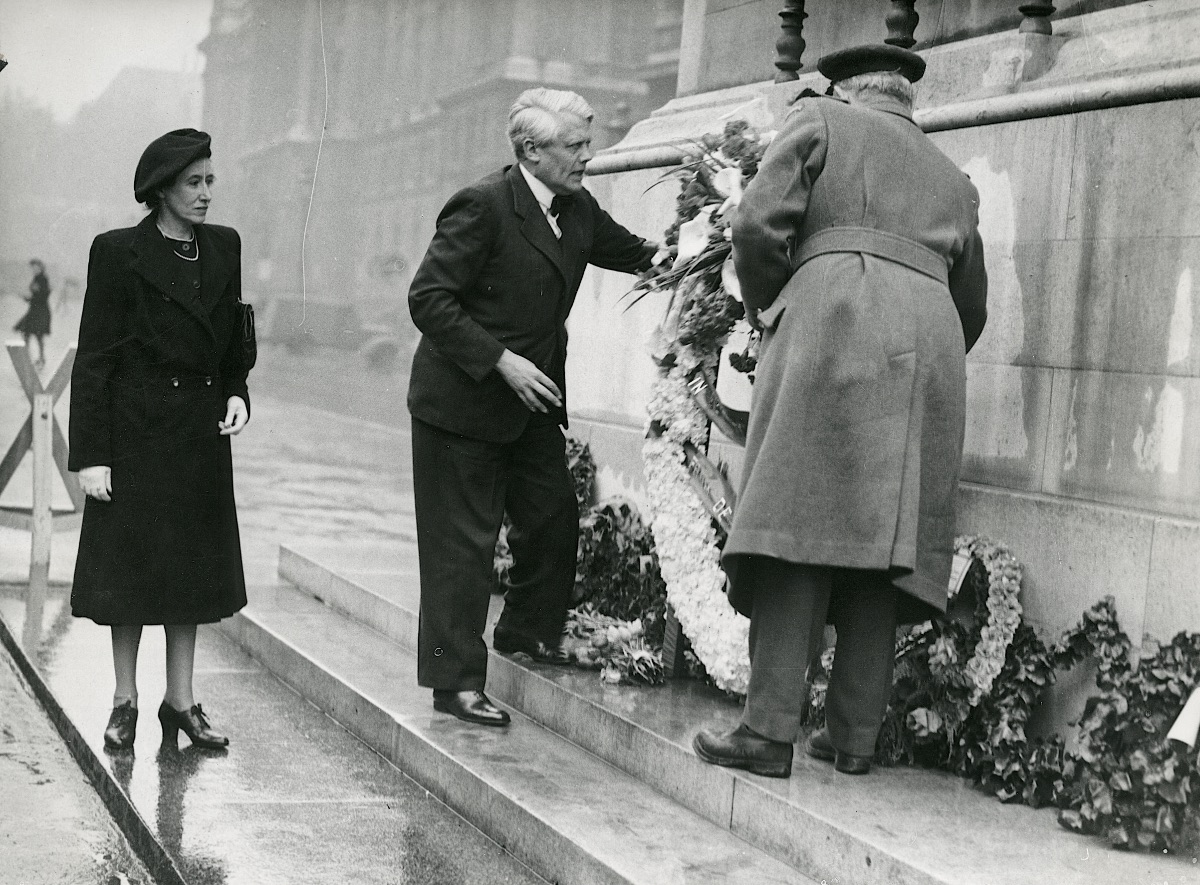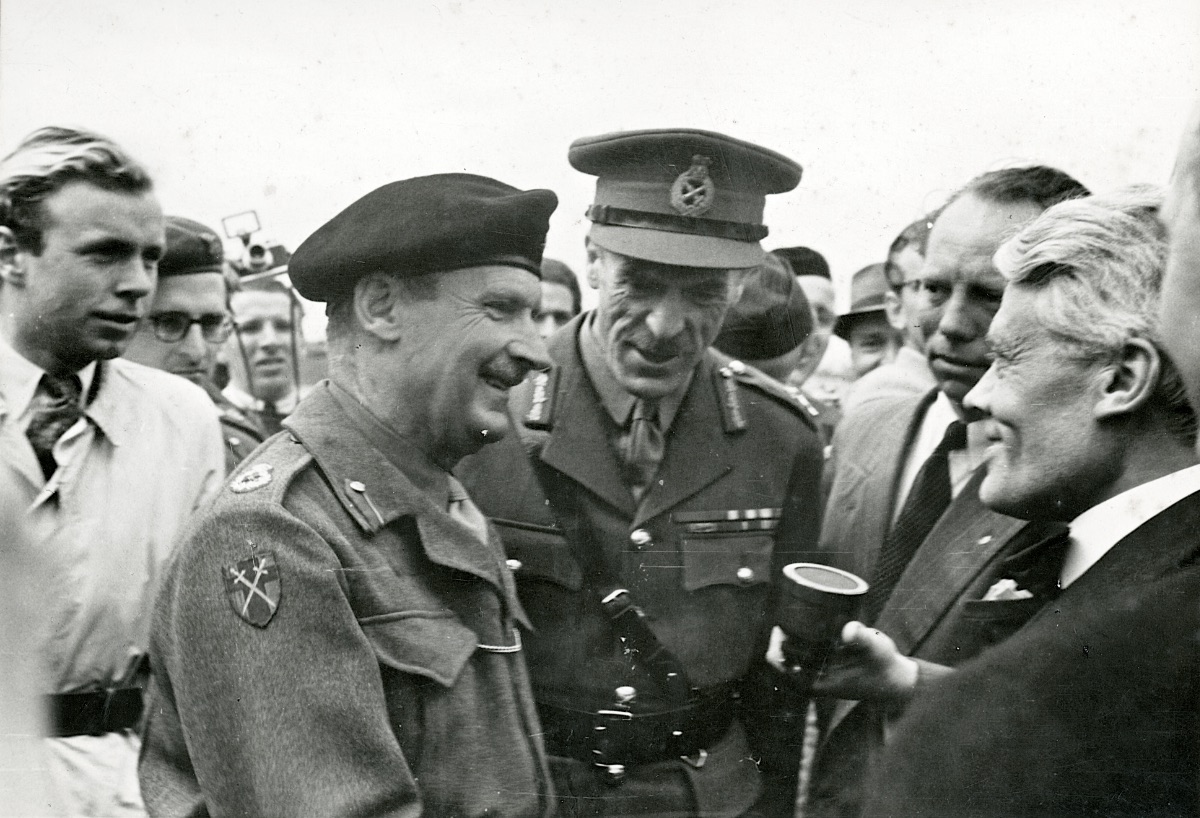The Foreign Minister's Mosquito flight to Copenhagen
Article
It was a busy day in B.160 Copenhagen/Kastrup on 7 May 1945. Just before 11.00 hrs. a Mosquito FB VI touched down. Three weeks before the pilot had bombed the Gestapo HQ in Odense, now he arrived with the soon to be Foreign Minister.
Shortly before 11 a.m. on 7 May 1945 a Mosquito FB VI escorted by three Spirfire XVIs touched down in the newly liberated B.160 Copenhagen/Kastrup. This was a VIP transport. The VIP was John Christmas Møller returning from London soon to become Foreign Minister in the Liberation government. His return had been expected since the 5th, but his departure from London had been delayed.[1]

Guido Leo John Christmas Møller was a prominent figure in Danish politics at the time. He had been the leader of the Conservative party from 1932-1939, and following the German occupation he became minister without portfolio in the first Coalition government and later minister for commerce. He remained openly critical to the German occupation and in October 1940 he was forced to resign as minister on German demand. Three months later, in January 1941, he was forced to resign as member of parliament too. He got in touch with the early resistance movement, and on 1 May 1942 he escaped via Sweden to London where he became the president of the Danish Council. In this position he never got a real political influence in London, but he became a popular voice in Denmark due to his many speeches for the Danish public in BBC.[2]
The Danish newspapers reported that this was in many ways a dream come through for Christmas Møller:
It has always been his wish to fly a Mosquito machine. They are extremely popular in England, and they have repeatedly proved to be the punctual and effective helpers of the Danish Resistance Movement. Christmas Møller has not lost his old interest in flying. He has flown across the Atlantic and three times between Stockholm and London, and now he came as expected was flying with the greatest possible speed back to Denmark—fast, yes, when he first got in the air, but bad flying weather had grounded him in London several days after the liberation of Denmark.[3]
Christmas Møller was greeted by many people on his was from the airfield to the Prime Ministers Office in central Copenhagen. Later in the day, he was in audience at the Royal Palace.

Following the German surrender in Denmark, Christmas Møller needed to go to Denmark—fast. The only way to do so was by means of a military aircraft as no civilian aircraft flew this route. A crew from 21 Sqn was assigned to the task. The pilot was the squadron’s Commanding Officer Wg Cdr Wg Cdr Alan Gatenby Wilson, DFC (70831) and he was accompanied by Flt Lt J. T. Pearson, another experienced pilot from the squadron.
Both were very experienced pilots. Wilson had been granted a commission as Acting Pilot Officer on probation as early as in December 1937, and he had been the CO of 487 (RNZAF) Sqn from May 1943 to February 1944. He had taken over the squadron on 4 April 1945, two weeks after the attack on the Shell House—the Gestapo HQ—in Copenhagen, and he replaces Wg Cdr Kleboe, DSO DFC AFC, who had been killed in this attack. Two weeks after his arrival, on 17 April 1945, he flew the only Mosquito from the squadron that took part in the Gestapo HQ in Odense.
Wilson flew from B.58 Brussels/Melsbroek to Croydon on 6 May and returned with Christmas Møller.[4] They stayed the night and continued to Copenhagen the next morning.[5] It is not possible to identify the aircraft. However, Wg Cdr Wilson flew Mosquito FB VI (RS573) on all operational sorties recorded in the operational record book from his arrival to the squadron and to the end of the war.

The Mosquito was escorted by four Spitfire XVIs from 416 Squadron. It was, at it is recorded in the operational record book, “Another so-called ‘Milk-Run’ by the Squadron to Copenhagen today, this time Ops.”[1] For some reason it has not counted as operations when the squadron had escorted Dakotas to Copenhagen on 5 May. Four pilots of “B” Flight were designated for the mission were Plt Off. Lawrence Esmond Spurr, J.91114 (in Spitfire XVI DN-F, TD251), Fg Off. K. J. Williams (in Spitfire XVI DN-K, TB905), Gordon M. Hill, J.37340 (in DN-S, TD187), and Fg Off. Roland Olivier Brouillard (in DN-Y, SM466). Hill had problems with his aircraft and had to return to base.[7]

Endnotes
[1] Christmas Møller kom hjem Kl. 11, Ekstra Bladet, 7 May 1945, p. 1.
[2] Kaarsted, Tage: John Christmas Møller in Dansk Biografisk Leksikon at lex.dk; https://biografiskleksikon.lex.dk/John_Christmas_M%C3%B8ller (accessed on 18 July 2020).
[3] Christmas Møller hjemme igen efter tre Aar. Nationaltidende, 8 May 1945, p. 11.Translated from “Det har altid været hans Ønske at komme til at flyve med en Mosquitomaskine. De er jo uhyre populære i England, og de har gentagne Gange vist sig som den danske Modstandsbevægelses punktlige og effektive Hjælpere. Sin gamle Interesse for Flyvningen har Christmas Møller ikke mistet. Han har fløjet over Atlanterhavet og tre Gange mellem Stockholm og London, og nu kom han som venteligt var flyvende med den størst mulige Hastighed tilbage til Danmark - hurtigt, ja, da han først kom i luften, men dårligt Flyvevejr havde opholdt ham i London flere Dage efter Befrielsen af Danmark.”
[4] NA: AIR 27/265. According to the ORB, they returned with “the Danish Prime Minister”. It is presumed that this was Christmas Møller.
[5] This sortie is not recorded in the operational record book of 21 Squadron, but it is presumed that it was carried out on this way.
[6] NA: AIR 27/1816.
[7] Clarence Simonsen, The Making of a WWII RCAF Fighter Pilot Part Six, https://clarencesimonsen.wordpress.com/2017/09/28/ (accessed on 17 July 1945).